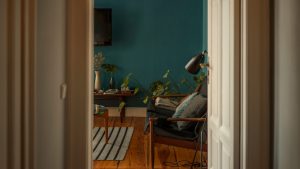
Hardwood floors are an investment in the beauty and value of your home, radiating warmth and elegance. However, the fear of unsightly scratches can often dampen the joy of owning them.
From everyday foot traffic to playful pets and moving furniture, numerous culprits threaten the pristine surface of your hardwood. But fret not! Preventing scratches is far easier than repairing them.
This comprehensive guide will equip you with practical tips and strategies to safeguard your hardwood floors, ensuring they remain a source of admiration for years to come.
Understanding the Enemy: Common Culprits and Vulnerabilities
To effectively protect your hardwood floors, it’s essential to understand the common causes of scratches:
- Dirt and Grit: These abrasive particles act like sandpaper, scratching the finish with every step.
- Pet Claws: Unclipped pet nails can leave deep, noticeable scratches.
- Furniture Movement: Dragging furniture across the floor is a major cause of scratches, often leaving long, deep marks.
- High Heels and Cleats: These can dent and scratch the surface, especially if they have sharp edges.
- Lack of Doormats: Failing to trap dirt at entrances brings in the enemy, allowing abrasive particles to be tracked throughout the house.
Fortifying Your Floors: Practical Tips to Prevent Scratches
-
The Doormat Defense: Your First Line of Protection:
- Place durable doormats at all entrances to trap dirt, sand, and grit.
- Opt for mats with coarse fibers that effectively remove debris from shoes.
- Regularly clean the mats to prevent accumulated dirt from being tracked indoors; shaking them out or vacuuming them is essential.
-
The Shoe-Free Zone: A Simple Yet Effective Strategy:
- Establish a shoe-free policy, especially for high heels, cleats, and shoes with embedded debris like small rocks.
- Provide shoe racks or baskets near entrances for convenient storage, making it easy for people to comply.
- Encourage guests to remove their shoes, explaining the importance of protecting the floors.
-
The Furniture Pad Fortress: Shielding Against Scuffs:
- Attach felt pads to the legs of all furniture that rests on the hardwood floor, even seemingly light items.
- Use heavy-duty pads for heavier furniture, and consider using wider pads for large pieces.
- Regularly inspect and replace worn-out pads, as they can become ineffective over time.
- Place rugs under furniture that is moved often, such as chairs at a dining room table.
-
The Pet Protection Protocol: Keeping Claws in Check:
- Trim pet nails regularly to prevent scratches, using pet-specific clippers.
- Consider using pet booties for added protection, especially for larger dogs that may have more impact on the floor.
- Provide scratching posts for cats to redirect their natural scratching behavior, preventing them from using the floor.
-
The Cleaning Crusade: Minimizing Abrasive Particles:
- Regularly sweep or vacuum with a soft brush attachment to remove dirt and grit, which are the primary culprits of scratches.
- Use microfiber mops for gentle dust removal, as they trap particles effectively.
- Avoid using vacuums with beater bars, as they can scratch the surface, especially if the brush is worn.
-
The Movement Mastery: Lifting, Not Dragging:
- Always lift furniture when moving it, rather than dragging it across the floor, even for short distances.
- Use furniture sliders or dollies for heavy items, making them easier to move without scratching.
- Plan furniture moves carefully to minimize contact with the floor, clearing a path before moving items.
-
The Humidity Haven: Maintaining Stability:
- Maintain a consistent humidity level (35-55%) to prevent wood from expanding and contracting, which can lead to cracks and scratches.
- Use a humidifier or dehumidifier as needed, monitoring humidity levels with a hygrometer.
-
The Rug Regiment: Strategic Placement:
- Place rugs in high-traffic areas, such as hallways and entryways, to absorb wear and tear.
- Use rugs with non-slip backings to prevent them from moving, which could cause scratches themselves.
- Place rugs under areas with furniture that commonly has items dropped on the floor, such as under a dinner table.
Conclusion: A Scratch-Free Sanctuary: Enjoying Hardwood’s Enduring Beauty
Preventing scratches on hardwood floors is a proactive approach to maintaining their beauty and longevity. By implementing these simple yet effective strategies, you can minimize the risk of damage and enjoy the enduring elegance of your hardwood floors.
From doormats and furniture pads to pet care and proper cleaning, each step contributes to a scratch-free sanctuary. Embrace these tips, and you’ll find that your hardwood floors remain a source of pride and admiration for years to come, free from the worry of unsightly scratches.
